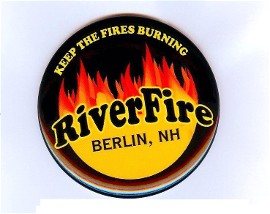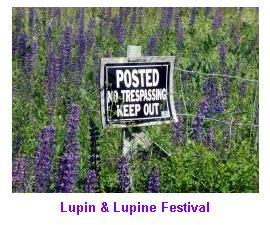Apples: History, Science and High Technology
by Dan Crawford
Pomology is the study of apples -- well, actually all fruit. What's so complicated about apples? The science and history behind them might surprise you. We all know the basics: warm days and cold nights improve the redness of the fruit (or the "blush"). But what else do you know about apples?
History
What you may not know is that apples probably got their start in Turkey or Armenia-perhaps even China. The apple has been domesticated, and just like a poodle, it resembles its earlier cousin, the wolf, very little.
The apple has been enjoyed as food for at least 4000 years (remember, Adam and Eve?). Ancient Rome had a love affair with apples, and they are traditionally used in many European desserts. There were very few fruit choices for America's early settlers: crab apples, wild cherries and berries, and plums. The pilgrims brought apples with them in 1620, but had a rough time getting apples (or anything else) to grow, initially.
Apples were a plentiful and popular crop for French settlers in Canada-and well-suited to the climate. Apples were a strong export from New York to the West Indies by the mid-1700s. By 1774, John Chapman, or Johnny Appleseed, began planting his way across America.
How Do You Grow a Good Apple?
Orchard owners have these factors to consider for successful cultivation:
Grafting - nearly all apples are the result of grafting-that is, tissue from one apple tree is joined with another tree. The seeds from the existing tree will not necessarily produce the same type of fruit when planted.
Wind - Strong winds actually inhibit the growth of trees, and can contribute to excess bruising of the fruit and damage to the tree itself.
Southern Exposure - "The best sun for most of the day," says Richard Kangus, of Kangus Farms in Bryant Pond, ME.
Bodies of Water - Not only is water used for irrigation, proximity to large bodies of water helps to regulate temperature. Large bodies of water take longer to heat and cool than the atmosphere. Lakes and oceans lessen the impact of heat and cold waves by keeping the atmospheric air less impacted by rising and falling temperatures.
Elevations and Slopes - A slightly elevated hillside works well for apples, because the cold air will settle in surrounding low-laying areas. There will be frost in the valley, but not in the orchard. Slopes are important to help with drainage and to reduce soil erosion.
Trees Need to Mature -- Apple trees must be around three years old to bear fruit, so farmers will plant trees only two years or older in their orchards. Some trees are eight to ten years old before reaching their maximum fruit bearing ability.
Pollination and the Bees for Hire -- Getting those blossoms pollinated is no stroke of luck, and often reinforcements are called in to do the job. In springtime, beekeepers are busy and popular with orchards. They arrive with their rental bees, and usually in the early evening, the bees are sent out to pollinate the trees. Often, apple orchards will have a few other trees nearby, such as peach or plum to entice the bees-a favorite is the lowly crab apple. Experiments have demonstrated that planting wildflowers will encourage native pollinators.
Pruning Stimulates Growth - A tree that produces fruit only every other year can be coaxed into blossoming through "cutting back." Sunlight is better able to reach maturing fruit when the leaves are thinned.
Disease - "This has been a rough year for fungus," says Richard Kangus of Kangus Farms in Bryant Pond, ME, a vendor at the Thursday afternoon Farmer's Market in downtown Berlin. "The wet weather over the past weeks has really made the fungus come around. Apple Scab leaves dark spots on the fruit and trees."
There are a multitude of diseases that can make apple trees sick including:
1. Fire Blight, a bacterial disease that results in brown blossoms and brown leaves
2. Apple Scab, a fungus creates black leopard spots on the leaves
3. Cork Spot, a PH and calcium shortfall results in thin broken leaves
4. Powdery Mildew, a fungal infection that looks like marshmallow fluff on leaves
5. Rust, a parasite that uses the apple tree as a host, and result is misshapen or rusty spotted fruit
"Applied research has produced a sophisticated way to control Apple Scab that requires far less fungicide to be used " says Steve Wood of Farnum Hill Ciders in Lebanon. "Apple Scab is the most damaging disease for apples worldwide, and it's caused by the Ascomycota fungus (Venturia inaequalis). It's really only been about 30 years since we've understood its progression, and have been able to control it better." Woods should know, because he has two or three scientific research projects underway at his orchards every year.
"Fire Blight (caused by the bacteria, Wininium amlivora) is not fully understood," says Wood. "Science has not learned any straight forward methods of control. It can kill a tree, or many trees. The bacterium is clearly moving north as climate change is resulting in a warmer and earlier spring." Wood gratefully praises the work of the late plant pathologist, Paul W. Steiner, Professor and Extension Fruit Pathologist, University of Maryland, College Park. "His work was the best, and really documented the stages of the disease. "Unfortunately, when the dollars are distributed for research the federal and university money is going to biomedical and biotech. Agricultural isn't sexy. We need to fund more studies, because it is how we understand our crops." Wood has noticed an obvious reduction in funding of primary research in the last 30 years.
Wood also takes issue with organic farms. "We put too much emphasis on the idea of natural. We can use harmful but natural poisons. Snake venom is natural, but that doesn't make it good for people." The idea of integrated pest control is the way go." His philosophy is simple: "Control disease with the smallest amount of intervention, and do the least damage to living things."
Supermarkets and the Loss of Heirloom Apples
Local apple varieties have been lost to advances in modern convenience - especially the supermarket. In the days before refrigeration - say the 1920s and 1930s, most every farm or home that had a vegetable garden also had at least a few fruit trees. In an article called "The Apples of Your Eye," Smithsonian magazine (www.smithsonianmag.com/science-nature/apples.html) discussed the push to revive and reestablish the apple varieties that may be dwindling out, as the trees have been neglected in favor of superstore shopping.
"Some apple varieties lost favor because they were brown or ugly, but still very good tasting," says Steve Wood. "But don't misunderstand, just because it's an old apple variety doesn't mean it's good." Wood says there may be something to the idea that uniform looking apples may have had strong appeal in the age of tailfins and President Eisenhower. The ability to use technology like large-scale cold storage gradually lured people slowly away from their acquaintance with agriculture. "People had affection for bright, shiny things. That went for apples, too, I guess. Of course, that's changing now: recent markets will pay good money for certain heirloom varieties."
If you have an ancient apple tree on your property that hasn't produced fruit in many years, with some work, it might come back to life, as discussed by the Organic Agriculture Centre of Canada's website:
It may be possible to trim older trees, and reduce their overall size to improve their fruit-bearing ability. If a tree is pruned, it will not be using as much energy-so it becomes a more efficient. The canopy of leaves may be too dense on a bushy tree-so trimming allows more sunlight to reach the ripening apples. (www.eap.mcgill.ca/CPTFP_7.htm#Renovating old trees)
High-Tech Orchards
According to the website for Sage Fruit (www.sagefruit.com), a large orchard in Washington state, modern science is changing the way apples are grown and harvested. High Density Orchards-Traditional farms would have 150-180 apple trees per acre. High density farms have between 2000 and 2700 trees per acre! Instead of trees planted 12-20 feet apart, they are planted as little as one foot apart. This system takes immense initial planning, but yields the following results:
Water Saving - The ground irrigated more efficiently reaches the trees
Reduced Labor Costs -The people harvesting can pick more fruit with less ladder setups and movement.
Easier Trimming - Trees can be pruned with less walking and movement
Better Sunlight - The leaves can be trimmer more easily, exposing the fruit to more direct sun
Richard Kangus mentions a number of orchards in Maine using high-density planting. "They plant the trees in hedgerows, almost. There's all lined up and straight."
Whether you pick it in your yard, buy it from a farm stand or supermarket, there's a lot of history and science surrounding your apple. As Steve Wood says, "The best way to produce apples is to get an understanding of all the ecologic elements, and how they affect what we do."
|















 1
1 2
2 3
3 4
4 5
5




